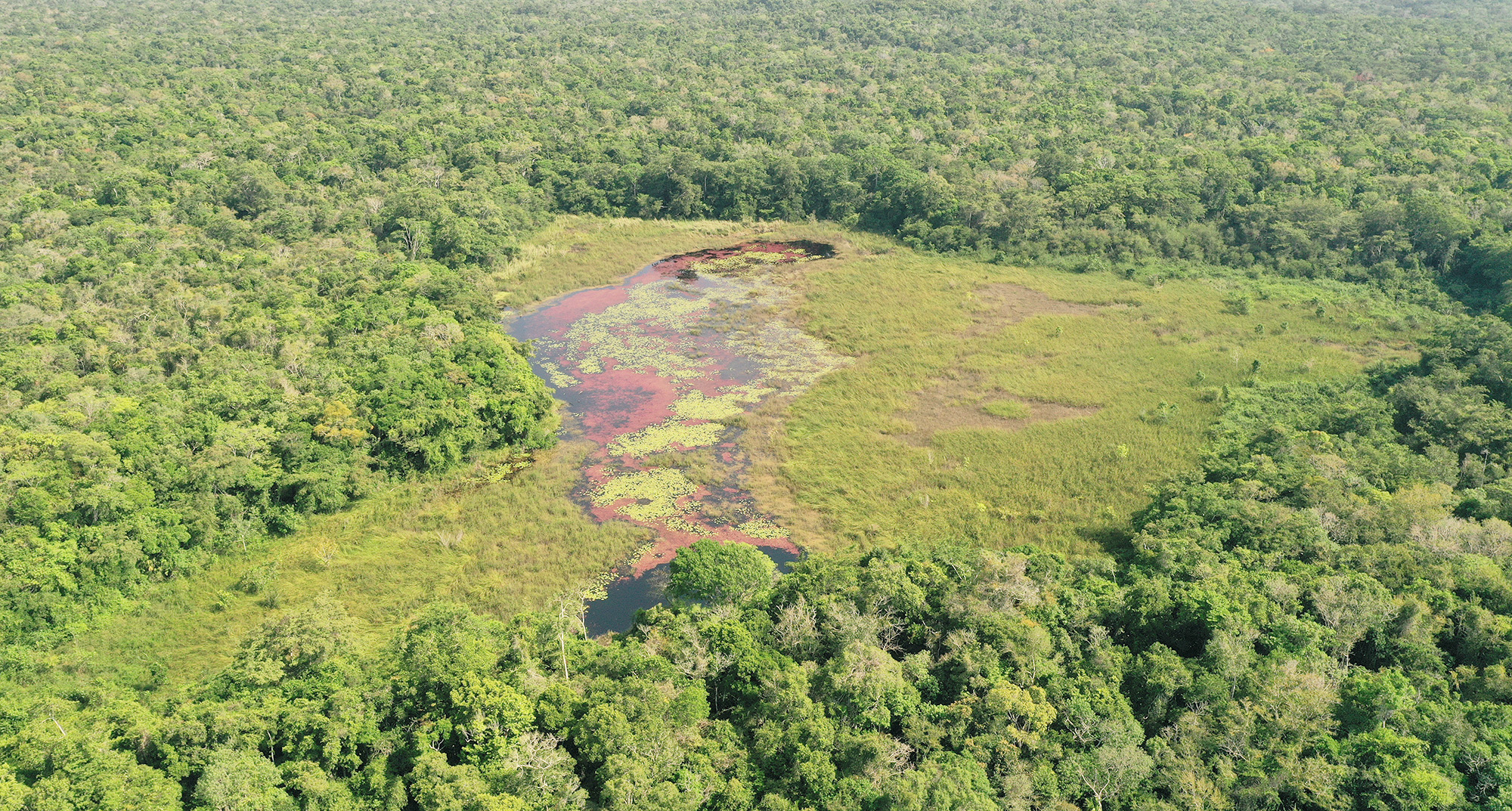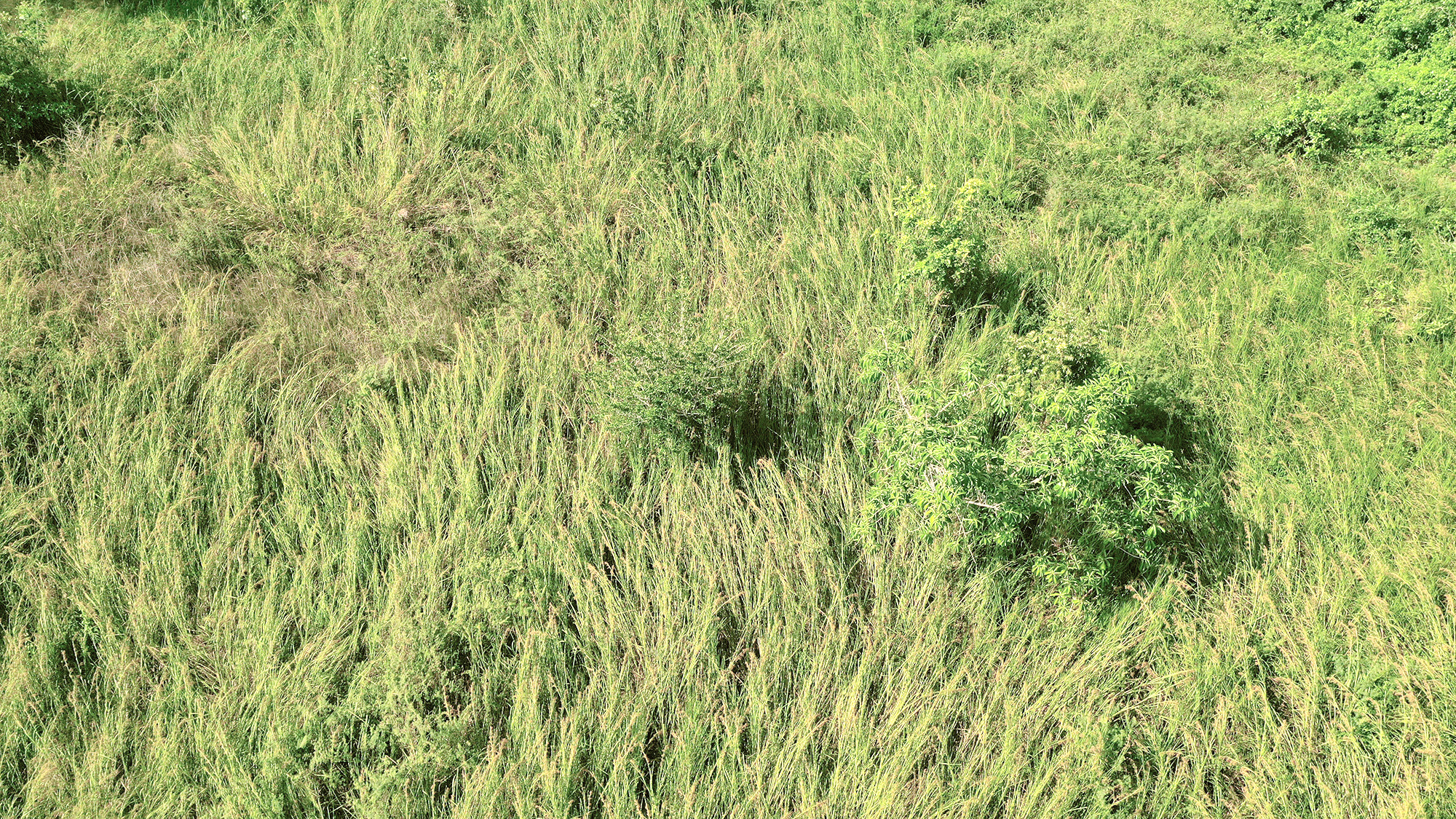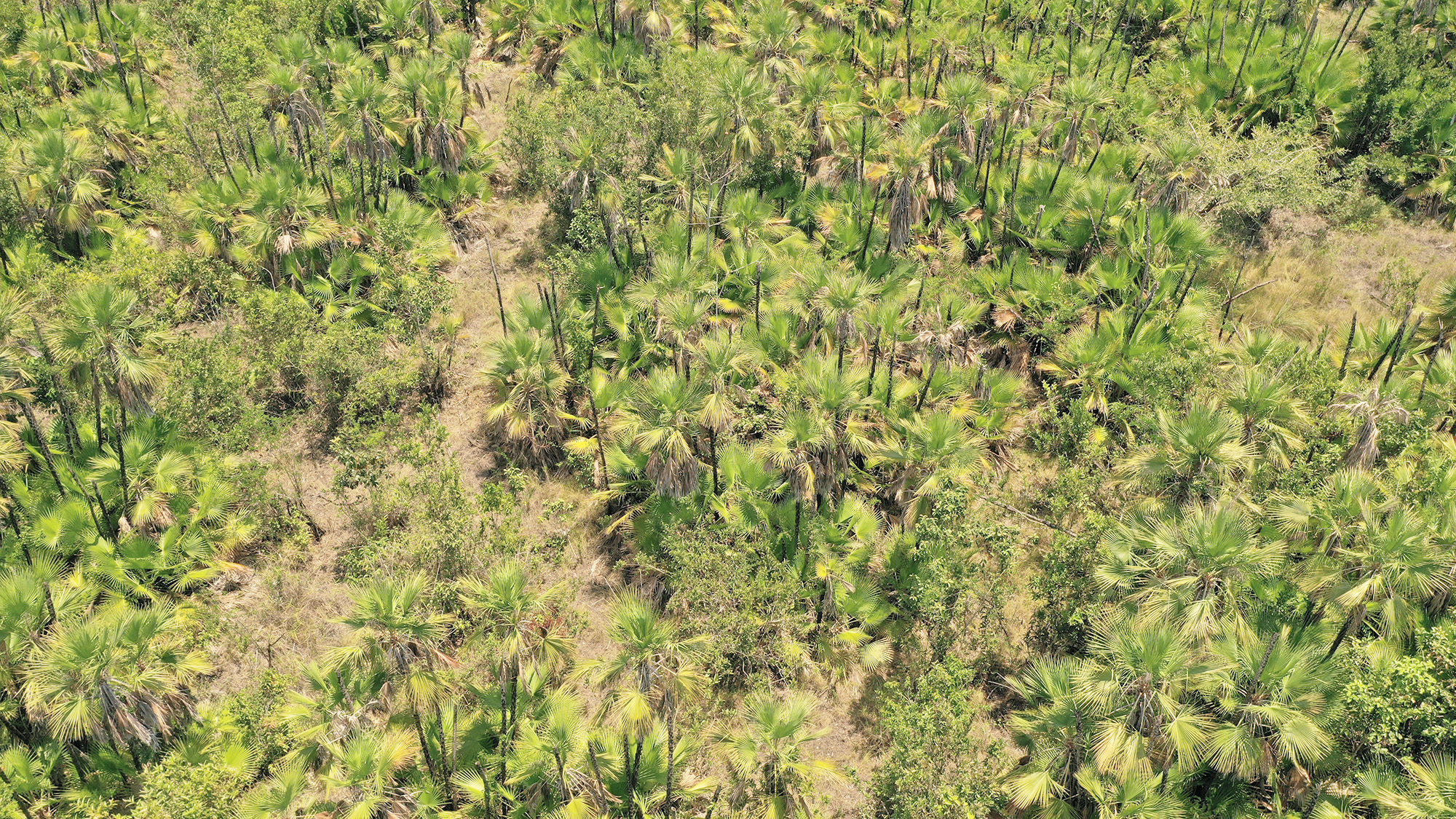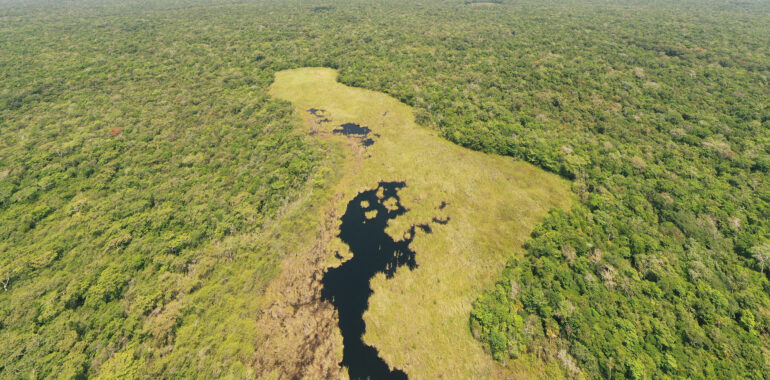Not every ecosystem and habitat in the world has been explored yet. In commemoration of World Habitat Day, FLAAR Mesoamérica encourages you to learn about one of the least known environments of the Maya Biosphere Reserve. The savannas of Petén may be the habitat of a number of species that still needs to be defined.

This savanna near “Los Gallos” camp in the Forest Management Unit La Gloria, holds a small lagoon inside. You can see how the limits of where the savanna starts, and the forest ends are very defined. San José, Petén; May 2022. Drone photo by Emanuel Chocooj.
What makes these habitats different?
The savannas in Petén have particular characteristics that make these habitats stand out from the rest of habitats and ecosystems of the Maya Biosphere Reserve. These characteristics in fact seem to determine the number of species that inhabit them.
Among their ecological features are the following. First and foremost, these savannas withstand opposite conditions in the retention and availability of water during the seasons. In the dry season, the soil dries out, and most of the herbaceous cover dies. On the other hand, when the rainy season arrives, the soil gets so saturated that the whole ecosystem becomes flooded for months. With this last condition, it is not a surprise that plants that can also be found in the rivers of the Guatemalan Caribbean can inhabit these locations.
Another characteristic of the savannas in Petén is their exposure to high temperatures and solar irradiance. The temperature in Petén is generally higher than in other regions of Guatemala, however, due to the lack of a tree cover, the savannas may endure even higher temperatures throughout the year.

This grassland area may be reminiscent of other savannas around the world, however, some grasses may grow up to 2 meters tall. San José, Petén; May 2022. Drone photo by Emanuel Chocooj.
What is yet not known about the Petén savannas?
The savannas of Petén are not a new discovery whatsoever. The National Council of Protected Areas of Guatemala [CONAP] (2015), included them in the typology of ecosystems of the Maya Biosphere Reserve in its master plan. There are also publications regarding the savannas of the Yucatán Peninsula (Bezaury, et al. 1993) that dive into their ecology and biodiversity.
Nevertheless, it seems that no research has been done in the department of Petén regarding the particular characteristics of the savannas of the Maya Biosphere Reserve. In this regard, there are many aspects that still need answers. For example, what aspects of the soil make it impossible for most tree species to grow here, and lead the savannas to turn into forests? Were these ecosystems made or influenced by the Maya? Are these ecosystems not developing into forests because of other current anthropogenic activities, such as provoked fires?
One of the most relevant questions right now, which is also the most related with the topic that inspired this blog (the commemoration of World Habitat Day) is to know what species find the perfect conditions in these environments to call them home. So far, FLAAR Mesoamérica has been able to document what could be just a handful of them. For that reason, it is encouraged that other researchers look into this topic, and that local park administrators also take it into account.

Pure tasiste palm (Acoelorraphe wrightii) ecosystems develop in some of the savannas of Petén, sometimes covering a few square kilometers. The tasiste palm is among the few species that seem to thrive and characterize the savannas of Petén; other species are Crescentia sp. Guadua longifolia, Cladium mariscus, and Hymenocallis littoralis. Savanna 24 in FLAAR Mesoamérica’s tabulation, Laguna del Tigre National Park; April 1, 2022. Drone photo by Haniel López.
Credits for the title cover photo: another savanna near “Los Gallos” camp at the Forest Management Unit La Gloria. San José, Petén; May 2022. Photo by Emanuel Chocooj.
Reference
- 1993
- SIAN KA’AN. Introducción a los ecosistemas de la península de Yucatán. Amigos de
Sian Ka’an, AC.https://www.amigosdesiankaan.org/wp-content/uploads/2021/12/3ea2.pdf
- 2015
- Plan Maestro de la Reserva de la Biósfera Maya. Segunda Actualización. Tomo 1.https://selvamaya.info/wp-content/uploads/2017/01/RBM_Tomo-1_Light.pdf
Written by Sergio D’angelo Jerez.

